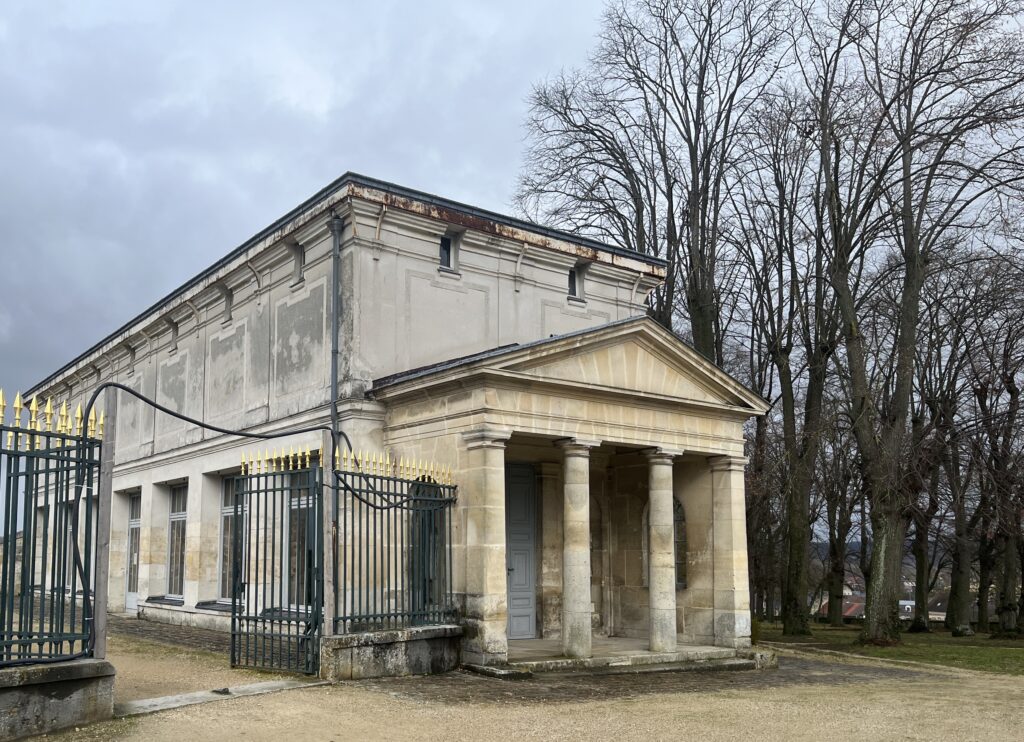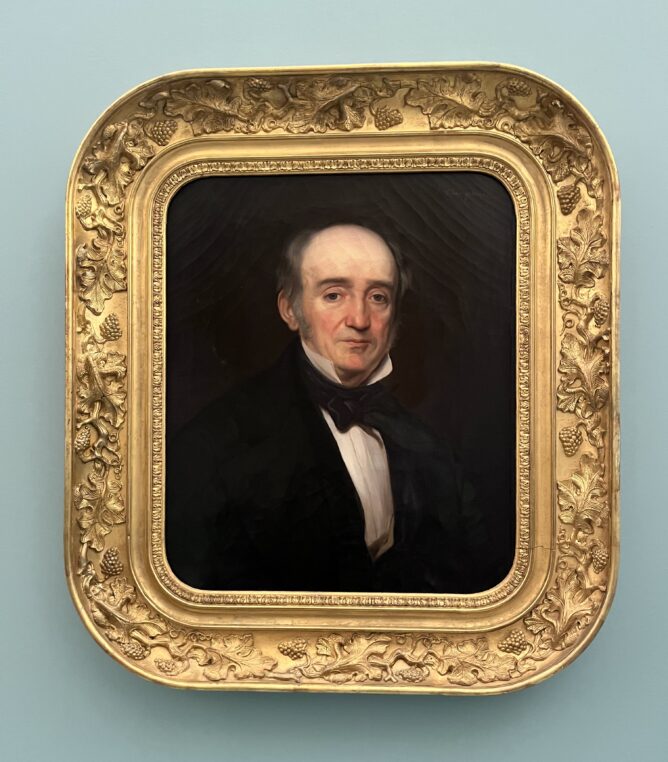
Franz-Xavier Winterhalter, Florinda , 1853, New York, The Metropolitan Museum of Art, William H.Webb will 1899
Prosper Mérimée is best known around the world for the two operas “Carmen” by Georges Bizet (1875) and “La Périchole” by Jacques Offenbach (1868) which were based on the short stories he wrote. La “Périchole” was called “Le Carrosse du Saint Sacrement” and took place in Peru. “Carmen” is set in Andalusia, Spain, where he loved to go and where he met the future wife of Napoleon III, the French Empress, Eugénie de Montijo, at a very young age. He was an art critic and an inspector of Historical monuments and saved many churches with his protégé, Eugène Viollet-le-Duc, like the basilica of Vézelay, Musée de Cluny, Notre Dame de Paris as well as the city of Carcassonne. He never married but was a great womanizer and had, for six years, a public liaison with Valentine Delessert, the wife of the Préfet de Police de Paris. Close to Napoléon III’s court, he stayed seven times at Château de Compiègne, where this exhibition is organized until March 18. A small show of imperial sleds in the ballroom is also quite impressive and festive.

Eugène Giraud, “Portrait charge of Viollet le Duc”, April 12, 1861, Paris Bibliothèque Nationale de France
As a child, Mérimée had a great attraction to languages and learned English as well as Latin and Greek at school. He later studied Russian and the language of gipsies, whose world attracted him. He also spoke Spanish which he learned during his multiple travels to Spain. He was a concert pianist and his taste in paintings went for colorful works like François Edouard Picot‘s “Episode of the plague in Florence”, Alexandre Antigna‘s “Ronde d’Enfants” and Eugène Giraud‘s “Dance in a Grenada posada”. The paintings part of the show was curated by Laure Chabanne who now works for Musée d’Orsay. The ground floor part of the exhibition is entirely devoted to the different Salons he covered as a critic.

The hall of the castle is lined with paintings from the Exposition Universelle of 1853. Left, Jean-Léon Gérome, “Idylle” or “Innocence”, lent by Tarbes, Musée Massey, gift of Achille Fould, and a Frise meant to be reproduced on a vase, Musée d’Orsay right below
The show starts with his taste for archeology in a pretty blue decor where the Romantic painting of Reims cathedral by teh Scottish painter, David Roberts, stands out. Moulages of gargouille and chapiteau from Tour Saint Paul, illustrate the list of 1 076 endangered monuments which he draws in 1840. Daguerreotypes and photographs by Edouard Baldus which Mérimée used during his inspections, illustrate the state of different cloisters in Arles, Vienne and Vignory. He was very close to many local scholars, and a portrait of Esprit Requien, one of his correspondents in Avignon, shows how friendly he could become with these intellectuals in the provinces. Their letters are very intimate and he discusses his affair with Valentine Delessert with him as well as his solitude during his inspection trips.
The cartels of every painting and objects are very detailed and one discovers the intensity of his work in the descriptions of how he found such and such statue and saved them. A beautiful Triptyque which belonged to Catherine de Médicis was acquired by him from the antique dealer Beurdeley for Musée d’Ecouen. It sits in a case next to a painting of Cluny. After this room, we walk through the castle’s salons and dining room which are beautifully laid out for Christmas. Since Rodolphe Rapetti has taken over the Château de Compiègne, Napoléon III’s apartments have been renovated (including a ravishing bathroom with leopard carpeting) by curator Marc Desti and they are worth a special visit.
Wandering around the rooms of the castle is great fun with Louis XVIth former rooms redecorated in Empire style. Before discovering Carmen and La Périchole, we walk through the ballroom which has a glamorous exhibition of 18 th century sleds, and one, recently acquired, belonged to Joséphine. Some come from Holland but whe know that they were used to slide on Bois de Boulogne’s iced lake during the Second Empire.

XVII and XVIII th century sleds in the shape of a salamander and of a hypocamp behind, lent by Musée de Cluny to Musée National de la Voiture de Compiègne
Sadly Propser Mérimée’s last house at his parents on rue de Lille, burnt down and many of his letters and papers disappeared, but more drawings and letters are exhibited in the last room where portraits of his contemporaries are hanged. Alfred de Musset, Stendhal, Victor Jacquemont, all feature there as well as his manuscripts or first editions found or collected by curator Jean François Delmas. Dresses designed by Christian Lacroix for Carmen in 1989 are lent by Musée des Cultures Taurines Henriette et Claude Viallat, in Nïmes.

Irving Ramsay Wiles, Jeanne Gerville-Réache in the part of Carmen 1908, Musée Franco Américain de Blérancourt with two dresses by Christian Lacroix designed with old lace and fabrics in 1989, Nïmes, Musée des Cultures Taurines Henriette et Claude Viallat.
The last part of the show is dedicated to Prosper Mérimée’s women with a ravishing portrait by Winterahlter of Countess Lise Przezdziecka, a portrait of Duchesse Castiglione Colonna by Gustave Courbet (whose art Mérimée disliked), one of Eugénie de Montijo as a child and one of Pauline de Metternich by Hébert.

Ferdinand Bac, Prosper Mérimée in his archeological travels, 1857, Compiègne Musée National du château
The Metropolitan museum of Art lent two exceptional paintings, “Florinda” by Winterhalter and the “Expert Monkeys” by Decamps which mocks art critics…
We ended the visit with a quick lunch at the new restaurant/ tea room, “Le Jardin des Roses” in the park located in the former Orangerie in front of the rose garden.

On week ends, you can have a quick lunch at the Orangerie in the park, a five minute walk from the castle.
So you see there are many different themes to discover at Château de Compiègne which can be reached by train from Gare du Nord or by car in 1H15 mns. Teh exhibition on Mérimée is until March 18.
Share this Post



One Comment on “Prosper Mérimée, a multi faceted talent in Compiègne”
WOW! Merimee must have been a major risk taker to have romanced the wife of the Prefet de Police.